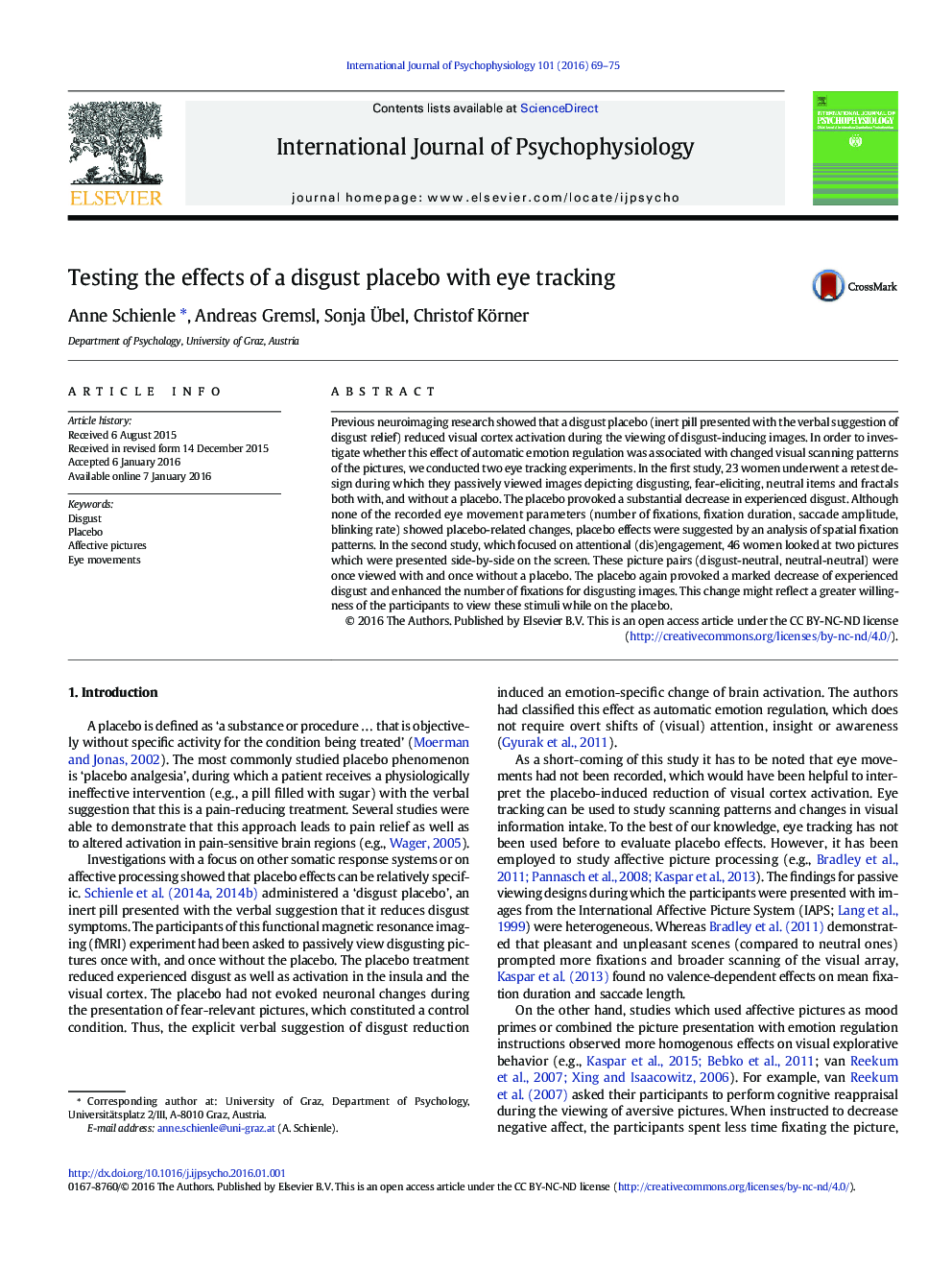| Article ID | Journal | Published Year | Pages | File Type |
|---|---|---|---|---|
| 7295146 | International Journal of Psychophysiology | 2016 | 7 Pages |
Abstract
Previous neuroimaging research showed that a disgust placebo (inert pill presented with the verbal suggestion of disgust relief) reduced visual cortex activation during the viewing of disgust-inducing images. In order to investigate whether this effect of automatic emotion regulation was associated with changed visual scanning patterns of the pictures, we conducted two eye tracking experiments. In the first study, 23 women underwent a retest design during which they passively viewed images depicting disgusting, fear-eliciting, neutral items and fractals both with, and without a placebo. The placebo provoked a substantial decrease in experienced disgust. Although none of the recorded eye movement parameters (number of fixations, fixation duration, saccade amplitude, blinking rate) showed placebo-related changes, placebo effects were suggested by an analysis of spatial fixation patterns. In the second study, which focused on attentional (dis)engagement, 46 women looked at two pictures which were presented side-by-side on the screen. These picture pairs (disgust-neutral, neutral-neutral) were once viewed with and once without a placebo. The placebo again provoked a marked decrease of experienced disgust and enhanced the number of fixations for disgusting images. This change might reflect a greater willingness of the participants to view these stimuli while on the placebo.
Related Topics
Life Sciences
Neuroscience
Behavioral Neuroscience
Authors
Anne Schienle, Andreas Gremsl, Sonja Ãbel, Christof Körner,
